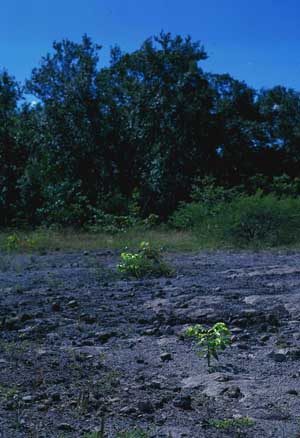|
|
 85 slow restoration DHJanzen100849.jpg high resolution
|
|
| Restoration of a forest does not move ahead evenly across an abandoned pasture or field. A very obvious source of heterogeneity is the location and species of the nearby seed trees, the parents that are contributing the juveniles. Equally important is which dispersal agents happen to be in the area, as well as what seed predators are preying on the dispersed seeds. But aside from those factors, the soil itself plays a role as well. This bare rock and ground - an old gravel pit carved out of the side of a pasture, is MUCH slower to get its forest back than the soil a few meters away. The two pale green mahogany seedlings that have survived there only made it because I put the seedlings down into a crack in the rock where some organic materials had accumulated, and even there they are very stunted ten-years old and barely surviving. A half century from now this site will still be an open hole in a generally closed-canopy forest that has come back onto the surrounding pasture. On the other hand, where the soil is good, even just a moderate seed rain will quickly produce a dense young forest of young trees, all busily trying to kill each other in their competition for the available light. | ||
back to lecture slides
or skip to: